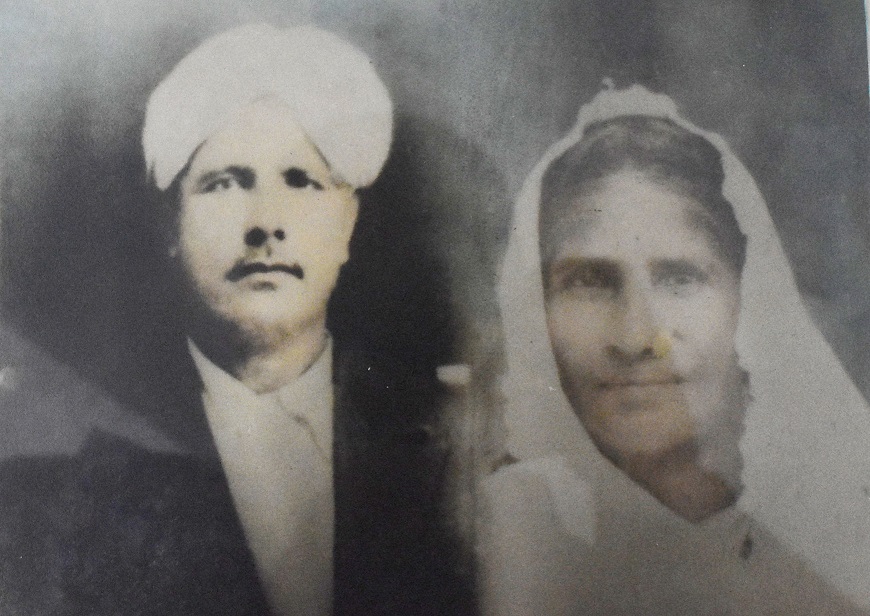PART 1
It is a rare thing to find recorded family history that has been neatly articulated by our forefathers.
For most of us, our greatgrandparents and greatgreatgrandparents were too poor to go to school and were unable to read or write even their own names.
For them, family history was passed down through stories, songs, poems, or drawings carved on wood and other sentimental items.
However, this is not the same for everybody in that era. Most were privileged to have received some form of basic learning while others graduated with degrees from universities overseas.
This allowed them to write and record their life stories and experiences, which would later be published by their children, grandchildren, or great-grandchildren.
This is how Asish Vinay Prasad got to learn about the journey of his grandparents and greatgrandparents who came to Fiji in the early 1990s under the indentured labour system.
The Fiji Times caught up with Asish at his home in Raiwasa, Suva, where he shared documents written by his grandfather, Durga Prasad, a firstgeneration girmitiya. According to Asish, he was raised and nurtured by his grandfather from birth and he had the opportunity to watch his grandfather work in his small office space, type-writing their family history.
Mr Prasad passed away in 1990, and it was many years later that Asish finally found the interest to go through the stories his grandfather had left behind.
“My niece, Mahima Prasad, a Year 9 student at St Joseph’s Secondary School in Suva had a project in school, and she wanted to write something about our family history,” Asish says.
“Only then did we finally go through my grandfather’s stories. That was also when the idea came to me to touch up on them. While reading the family genealogy compiled by his grandfather, Asish got to learn about how the family came to live in Fiji.
“According to my grandfather, his father Laljit Maharaj came to Fiji in 1912 on the ship Sutlej II as an immigrant and lived Wainibokasi, on land across the river behind the Wainibokasi Hospital,” he says.
“His wife, Muneshwari, arrived a year later in 1913 on the Chenab. Muneshwari was tricked by a harkathi (British agent) riding a horse-driven cart in the town while she was waiting for her nephew, Bhagwat Singh, to return from buying sweets.
“The harkathi frightened her and took her to Calcutta station where she was tricked and sent to Fiji by ship. Muneshwari was married to a police constable, and they also had children.
“Laljit and Muneshwari were stationed at the same centre in Wainibokasi, got married and had four children – daughter Bas Mati, and three sons, Chandar Pal Sharma, Durga Prasad Maharaj (Asish’s grandfather) and Shiu Prasad Maharaj.”
After being released from the indenture system in 1916, Laljit and Muneshwari bought their first lot of land at Naka, which, according to Durga’s journals, was in Visama, Nausori, and was now owned as a mandir (Hindu temple) called Durga Mata Mandir.

“There was a tin house with walled partitions and a wooden floor with small wooden shutters,” Mr Durga Prasad wrote.
“The overall size of the house was 20’ by 26’ with a detached bure (wood and straw hut) kitchen and separately an open bure-shed.
“About two chains of the land on both sides of the house were kept for a cow and vegetable garden of chillies, baigan, cow peas, bhindi, sarso and bhaji.
“The rest of the land, about five acres, was planted with sugar cane.
“The Prasad children attended a school in Wainibokasi known at the time as the Methodist Mission School. It was situated a mile away from the Prasad residence.
“By the end of 1928, Durga Prasad was in Class 3, and the following year he got enrolled at the new Sanatan Dharam School which had been built by the locals.
“I did two years in Class 7 at this school and from the beginning of 1934, I attended Dilkusha Methodist Boys School and was admitted to Class 8.
“I studied hard to beat the town boys in the same class such as Abdul Lateef (of the law family Lateef and Lateef).
“I had also become a Boy Scout and joined the Dilkusha Troop in 1934 of which Barkat Masih was Scout Master.
“I also worked hard as a Scout and in 1935 I became a First Class Scout.
“I became a King’s Scout the same year.”

Durga Prasad gained 14 proficiency badges and went to New Zealand in 1936 with a group of 12 scouts – six Indo-Fijians and six iTaukei.
The group was invited by the Scout Commissioner from Manawatu, New Zealand, FG Southon, who later became Durga’s personal friend and often stayed at his place when he came on trips to Fiji.
While preparing to sit for his Qualifying Examination, he met and got married to Chandra Wati and according to his journals, the wedding was considered “one of the biggest function ever held at Wainibokasi”.
Mr Prasad passed his Qualifying School Certificate Examination at the end of 1936 and joined the Teacher-Training and Technical Institute (TTTI) in Davuilevu, which was later known as Davuilevu Theological College. His son, Vijendra was born that same year on June 7, 1937.
• Read more about the family next week.



